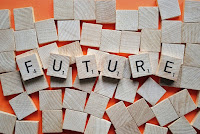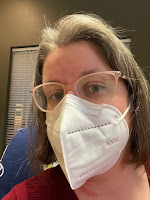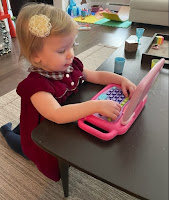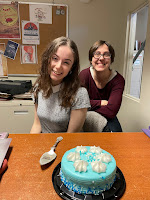Two years ago, I sat at home with my new baby, full of hope. I was planning a hopeful 2020 with lots of trips with the baby to museums and libraries, and lots of visits with friends and family. Well, we all know my hopeful start to 2020 didn’t pan out as expected. Within a few weeks we were hearing about Covid-19 in the international news, and by March it was here. All our lives changed. And still are changing.
As we start another new year, it is hard to have that same sense of hope that we normally feel in January. My baby just turned two and still hasn’t been to many museums. Omicron has us starting the year cautiously, aware more change is coming but not sure what it is. This is hard.
But change is a time of opportunity.
It is a time to think about what is important and build on it. It is a time to look at areas for improvement and look for solutions. It is a time of not knowing what to do next but reaching out to friends to help move forward.
Successful museums are not caught in the past nor immune from change. Although we are best known for talking about the past, what we are really about is helping people create the future.
What is the future Nova Scotians want? And how can museums help build this future?

We want a future with healthy communities. This means identifying the needs in our community and finding ways to meet them. This will often be things that might not have been seen as “museum work” but for which we are ideally situated to do. Think about how libraries, known as places to go to get things (books, videos, magazines) for a short while also became the place to get Covid rapid tests. Think about parks, known as places to connect with nature, became meeting places when people could no longer gather in their homes. What can museums be?
We want a future that is taking care of our planet. This means better understanding our world and how we interact with it. Think about how our natural history collections are real evidence of a changing climate. Think about how our cultural history collections provide examples of living more sustainably. Think about how our intangible heritage collections contain the knowledge to not just change what we do, but also reconnect us to why we need to change and give us the strength to make changes in difficult times.
We want a future that balances work and life. This means looking internally at the realities faced by our staff – paid and volunteer. Many museums run on passion but as burnout becomes a growing reality in every work sector, we need look at how museums fuel not just their communities, but the people that keep the museums operating. This is a time of self-reflection for boards, volunteers, and staff to consider governance, human resources, and workload.
Back in the ANSM office.

So, as we start 2022, not full of hope but rather uncertainty, I invite you all to join us in focusing on the future and believing we can make things better. Please stay in touch. We are looking at ways to incorporate more of your work into ANSM’s Beacon newsletter and social media. We want to hear what is worrying you and what is inspiring you. Share your successes and your FAILs (first attempts at learning). Tell us what you need help with or how you might be able to help us or others. Send us cake recipes… I think 2022 is going to need many occasions for cake.





